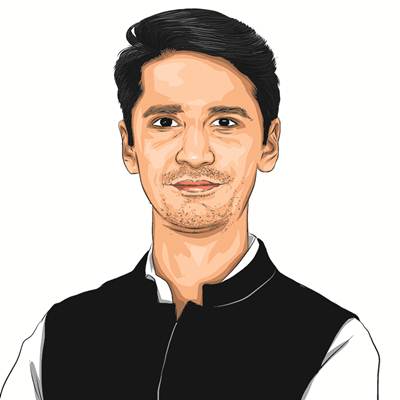Opinion As another monsoon unleashes its fury on Mumbai, the case for building a coastal forest
Historically, we have been adept at reclaiming land; now, we must reclaim our city, our sense of public consciousness, and the public good. By creating a coastal forest, we can transform Mumbai’s coastline into a resilient, vibrant, and equitable space for all
 Historically, we have been adept at reclaiming land; now, we must reclaim our city, our sense of public consciousness, and the public good (Express file photo)
Historically, we have been adept at reclaiming land; now, we must reclaim our city, our sense of public consciousness, and the public good (Express file photo) Mumbai stands at a crucial crossroads, presented with a once-in-a-generation opportunity on its west coast to redefine its public spaces and build a resilient future. Traditionally, open areas in our densely populated city have meant parks, maidans, and promenades. But as we navigate the escalating challenges of climate change, we need a 21st-century public space — a coastal forest that could be rooted in our ecological past and address the climate realities of our future.
A couple of centuries ago, Mumbai’s coastline was a different world. It was fringed with paddy fields and coconut groves, mangroves and mudflats, fishing boats and salt pans. The relationship between the city and its coast was reciprocal and harmonious. This wasn’t merely a picturesque past; it was a living blueprint for resilience. Amidst the city’s chaos, the coast offered tranquillity and calm.
But over the last century, land reclamation hasn’t just transformed our coastline — it has also narrowed our collective imagination of what public space can be. We’ve moved from valuing living ecosystems to constructing static, concrete structures or beautification initiatives where nature is often incorporated solely for its cosmetic value. This shift hasn’t just physically changed our environment; it has limited our public consciousness. In the process, we’ve lost more than land — we’ve lost possibilities.
As the unprecedented rainfall and flooding this month have painfully indicated, today, Mumbai is facing a growing climate emergency. We will also be confronted with numerous additional hazards and challenges associated with a heating world — urban heat islands, deteriorating air quality, rising sea levels, frequent extreme weather events, and declining biodiversity. We risk losing the rich habitats that support the barbets, bulbuls, and bee-eaters that make our city vibrant. Furthermore, the reduction in green spaces exacerbates these issues.
So, what does it mean to build public space in a warming age? The answer, in part, could lie in a citizen-led proposal to reimagine our coastline through the creation of a coastal forest. This proposal is not just about planting trees; it’s about creating a thriving ecosystem with immense ecological benefits. Unlike a more conventional garden that requires maintenance and upkeep, a native forest, populated with trees and plants indigenous to our coastal region, would be a self-sustaining ecosystem that can lower ambient temperatures, reduce the urban heat island effect, improve air quality, and mitigate flood risk. Importantly, reclaimed land is particularly vulnerable to flooding, making this intervention essential.
This living landscape would become richer, greener, and more resilient with age, acting as a public asset appreciating over time. Its cooling capacity, biodiversity, and carbon sequestration capabilities would increase as it matures. This approach aligns with and draws from existing official initiatives, including the Mumbai Climate Action Plan and MCGM’s Urban Greening Handbook, ensuring it complements the city’s broader environmental strategies.
Importantly, this proposal is not without precedent. Mumbai is already quietly crafting a new vocabulary for how both people and nature can thrive together. From the restored trails of Sanjay Gandhi National Park to the thriving mangrove belts that line our estuaries, these green spaces demonstrate the power of ecological integrity in an urban setting. More recently, new efforts like the Marol Urban Forest along the Mithi River and the Malabar Hill Forest Trail have shown how restoration and recreation can co-exist. These are spaces where native vegetation regenerates while citizens find shade, quiet, and connection — proof that public space can be designed to serve the climate, the community, and the city simultaneously.
Critics might argue that climate-smart solutions like forests may not be people-friendly, that open parks and promenades are more inclusive. However, such spaces often cater to a limited segment of the population, predominantly young men. A coastal forest, on the other hand, could function as green infrastructure that would serve the entire city. It would be especially beneficial for children, fostering a connection with nature, offering opportunities for discovery and imagination, and contributing to their mental health. While the visual imagination of this green space would resonate with a wide range of citizens, a master plan would also incorporate walking and biking trails, inviting active engagement, and shaded seating areas that offer tranquil spots for contemplation and community.
We also need to reckon with the deeper intersectionality of public access. Caste and class continue to dictate who has access to shade, safety, and cooling. Informal workers are particularly vulnerable to climate risks. While shade is vital to those who work outdoors — labourers, construction workers, street vendors — Mumbai’s public parks are often closed during the very hours of peak daytime heat. A coastal forest can offer a more equitable distribution of essential resources to these vulnerable communities, along with the elderly and the differently abled. When designed with care, climate resilience and social inclusion can go hand in hand.
This proposal emphasises designing with, not for, the community. It calls for visionary governance that weaves together science, community input, and policy to serve the public good. Local perspectives are crucial, and citizen walk-throughs and local insights can significantly shape the project. From consultation to co-creation, a coastal forest invites a new model of civic participation and public stewardship — one that empowers citizens to become co-authors of the city’s future.
Historically, we have been adept at reclaiming land; now, we must reclaim our city, our sense of public consciousness, and the public good. By creating a coastal forest, we can transform Mumbai’s coastline into a resilient, vibrant, and equitable space for all. We stand at the threshold of possibility. This is not just a project — it is a chance to redefine how Mumbai breathes, cools, and belongs to all. The future demands imagination. Let’s choose it.
Nath is CEO of the India Climate Collaborative and Patel works in climate change philanthropy and policy







